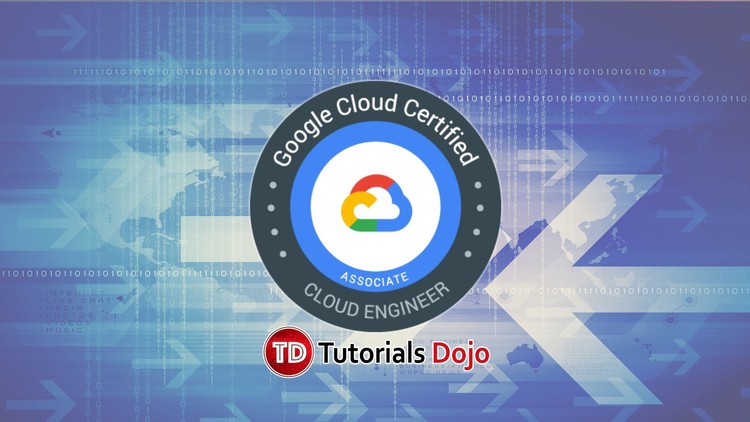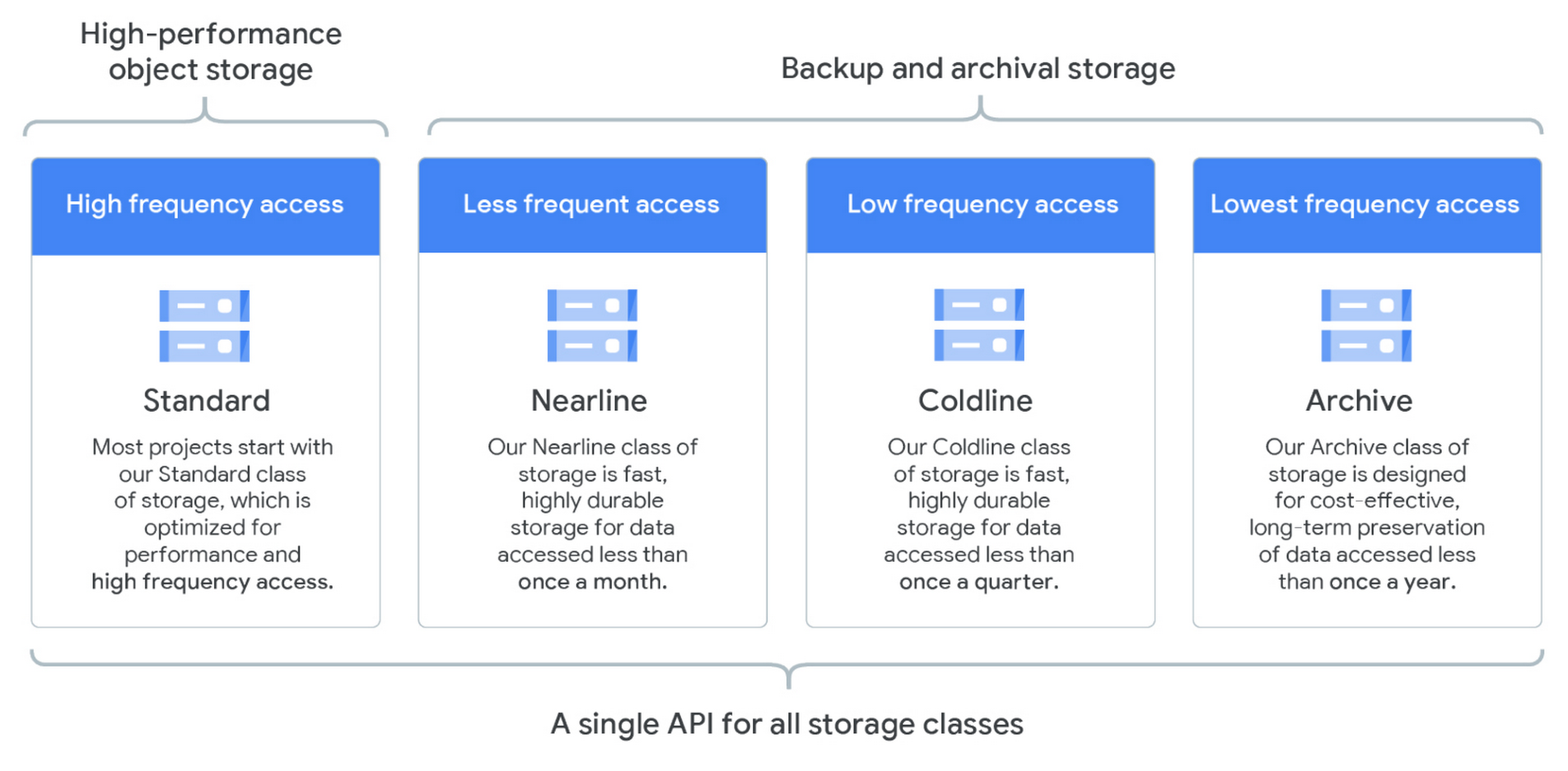Last updated on June 29, 2023
Google offers the Associate Cloud Engineer (ACE) as an Associate level certification for individuals who already have IT experience but are relatively new to the Google Cloud Platform. For individuals with zero IT experience or for non-IT people who want to learn Google Cloud, you might want to check Google’s Cloud Digital Leader Certification. To be ACE-Certified, you need to pass the Associate Cloud Engineer exam. This exam will verify your knowledge in deploying, monitoring, and maintaining projects on Google Cloud.
The ACE exam can be broken down into five domains:
-
Setting Up a Cloud Solution Environment
-
Planning and Configuring a Cloud Solution
-
Deploying and Implementing a Cloud Solution
-
Ensuring Successful Operation of a Cloud Solution
-
Configuring Access and Security
You can view the detailed exam outline here.
Google recommends an individual to have a minimum of 6 months of experience building in Google Cloud before taking the exam. Worry not, if you haven’t got the experience, this guide will provide you the necessary materials to help you pass the exam.
Study Materials
The following resources will help you prepare for the Associate Cloud Engineer Certification exam.
-
Official Google Cloud Documentation – Google provides comprehensive guides in building solutions on the Google Cloud Platform. This documentation includes guides for GCP Services and includes helpful content like popular solutions, tutorials, and best practices that are often seen on the actual exam.
We suggest going through the following documentation:
2. Google Cloud Blog – This includes the latest news, features, and announcement on Google Cloud.
3. GCP Services FAQ – Google Cloud provides an FAQ section on each of their services. We suggest you go through the FAQ of the primary services like Compute, Storage, and IAM. We will further discuss the services to prioritize in the latter section.
4. Google Cloud’s Platform Comparison – If you have a background in other Cloud Providers like AWS and Microsoft, Google provides a side-to-side services comparison. This comparison will help you picture out and familiarize yourself with the GCP Services as most of the services work in the same manner.
5. Google Cloud Free Program – Google Cloud offers a 90-day trial period that includes $300 in free Cloud Billing credits for new accounts. Google also provides free usage for services like Compute Engine, Cloud Storage, and BigQuery as long as you don’t exceed the monthly usage limit. Take advantage of this program to practice building solutions and interacting on different GCP services. Make yourself comfortable navigating through the Google Cloud Console. To know more about Google Cloud Free Program, visit this page.
6. Google Cloud Tech – Youtube Channel – You can find helpful videos on Google Cloud’s official Youtube channel – from service introduction, tutorials, and labs. We suggest going through the Getting Started with Cloud playlist and videos about the services listed on the GCP Services to Focus on.
7. Official Associate Cloud Engineer Sample Questions – This is a 20 item question from Google. The sample questions may be short, but they familiarize you with the actual exam format and exam content. There is no limit on taking these sample questions.
8. Tutorials Dojo’s Google Cloud Platform Cheat Sheets – Think of these as a summary of all the essential information from the Google Cloud documentation. These cheat sheets also include different GCP service comparisons.
9. Tutorials Dojo’s Google Certified Associate Cloud Engineer Practice Exams (coming soon!) – This is not your typical practice exam. Our practice tests not only give you actual exam-like questions but also include thorough explanations that will surely give you aha moments. We also have a FREE Google Certified Associate Cloud Engineer Practice Exams-Sampler to help give you an idea of what the actual exam feels like.
GCP Services to Focus on
We list all the GCP services that are often included in the exam scenarios. Having a high-level knowledge of these services will almost guarantee you to pass the exam.
-
Google Compute Engine – You should be able to launch a VM instance, create backups, configure autoscaling, and manage instance groups.
-
Google Cloud Storage – Know the different Cloud Storage Classes and their use cases.
-
Google App Engine – Learn how to applications are deployed and how scaling works in App Engine. Know the difference between Standard and Flexible Environment.
-
Google Kubernetes Engine – Learn how applications are deployed in Google Kubernetes Engine. Learn how autoscaling works in Kubernetes. Know the common terms in Kubernetes like Pods, Deployment, Daemons.
-
Google VPC – You should be able to create VPCs and subnets from scratch. Know how to configure firewall rules and routes. Learn how to connect VPCs to other VPCs and on-premises networks.
-
Google BigQuery – You should learn how to import and export data to and from BigQuery. Know how to grant access to BigQuery Datasets.
-
Google Cloud Logging – You should be familiar with the different types of Audit logs. Learn how to export audit logs.
-
Google Cloud Monitoring – Learn how Cloud Monitoring works. Know what are Workspaces and Monitoring Agent.
-
Google IAM – Learn how to manage IAM users and groups. Learn how to grant access to different GCP services. Understand the roles, policies, and service accounts. Know the best practices on IAM.
-
Google Cloud Billing – Know the basic cloud billing principles. Know what are Cloud Billing accounts, how to create budgets and alerts. Be familiar with the common IAM roles in Cloud Billing.
-
Google Cloud Shell – Know what cloud shell is. Be familiar with the common gcloud commands for the most common GCP services like Compute, IAM and, VPC. Be familiar as well with bq and gsutil.
Validate Your Knowledge
If you think you have enough theoretical and hands-on knowledge, we highly suggest taking our Google Certified Associate Cloud Engineer Practice Exams. Each question in our practice exam falls into the different exam domains that Google provided. After taking the practice exam, you can quickly identify your strengths and the exam domains that you should continually work on. You should be able to identify the what and hows through the explanation provided on every question. Each answer is backed up with references, which we recommend that you thoroughly read if you want to understand the topic further. With our Associate Cloud Engineer Practice Exams and GCP Cheat Sheets, we guarantee that you will be able to pass the exam on the first try.
Sample Practice Test Questions:
Question 1
Your company’s finance team needs to back up data on a Cloud Storage bucket for disaster recovery purposes. You want to comply with Google’s recommended practices in implementing the solution for this task.
Which storage class do you think would be the best option?
- Multi-Regional Storage
- Nearline Storage
- Coldline Storage
- Archive Storage
Question 2
All employees in your organization have a Google account. Your operations team needs to manage over a hundred Compute Engine instances. The members of this team must be provided only with administrative access to the VM instances. Moreover, the security team wants to audit instance logins and ensure that the provision of credentials is operationally efficient.
What should you do?
- Create a new SSH key pair. Issue the private key to each member of the team. Configure the public key in the metadata of each instance.
- Require each member of the team to generate a new SSH key pair. Have them send their public key to you. Utilize a configuration management tool to deploy those SSH keys on each instance.
- Require each member of the team to generate a new SSH key pair and to add the public key to their respective Google account. Then grant the
compute.osAdminLoginrole to the corresponding Google group of the operations team. - Create a new SSH key pair. Issue the private key to each member of the operations team. Configure the public key as a project-wide public SSH key in your project. Lastly, allow project-wide public SSH keys on each instance.
Final Remarks
The amount of preparation for the ACE exam depends on the individual’s background. Google provided enough resources for you to prepare for the exam. The 90-day trial period that Google offers should be enough to familiarize yourself with the GCP Console and Cloud shell. Our high-quality practice exam and cheat sheets will solidify your knowledge and fill in all the missing pieces you need to pass the exam. Indeed, we hope that you will ace your ACE exam.
You can book your certification exam here. If you aren’t confident, don’t book yet or reschedule your exam. You have an option to take the exam on-site or remotely; either way, both are proctored. Don’t forget to take a good rest before the exam. If you will be taking an on-site exam, it is good to come early to the testing center for you to have time to relax and be comfortable in the exam environment or do a quick review. Best of luck in your exam and bring home that sought-after certification!






















